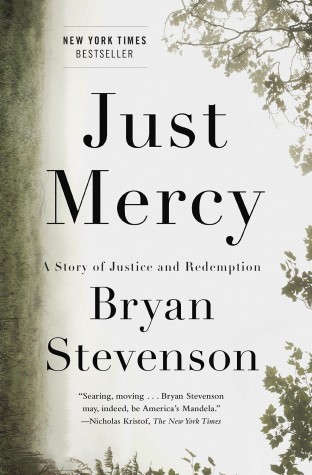“Just Mercy” and “The New Jim Crow” explore the complexity of incarceration
It is likely, that at some point over the summer, you encountered the omnipresent problem of mass incarceration in America. Perhaps you pondered the significance of incarceration while staring into the fierce and tired eyes that appear during the “Orange is the New Black” theme song, or while listening to the hauntingly dissonant chords of the “Serial” podcast. Or maybe, you encountered themes of incarceration this summer through more of a political lens in light of Obama being the first sitting president to visit a federal prison, or the arrest of Sandra Bland. The complex, prevalent subject of mass incarceration in the United States, predominantly of African American men, is deeply explored in the two complementary books: “Just Mercy” by Bryan Stevenson and “The New Jim Crow” by Michelle Alexander.
The New Jim Crow, published in 2010, is packed with unbelievable, fascinating statistics on America’s mass incarceration while deeply analyzing the legacy of slavery. Sarah Levin, Urban’s librarian, reflected on the ways reading “The New Jim Crow” impacted her thinking: “I was peripherally aware of some of the injustices in our penal system, and reading it made me hyper-aware of these problems and made me want to make sure that my friends knew about it.”
“Just Mercy,” published in 2014, tells the stories of the inmates on Alabama’s death row who Stevenson, a criminal justice lawyer, defended. Amy Argenal, director of Urban’s service learning program, recommended “Just Mercy” for Urban’s optional summer reading list, writing, “Given last year with the teach-ins and Urban’s … look at the criminal justice system, I thought it was a great book of narratives versus statistics.”
Argenal elaborates that in comparison to Alexander’s book, in “Just Mercy,” “the narratives of individual people brought it more home because they had names to those statistics.”
Gwen Mclaughlin (‘16), leader of White Privilege Awareness Club (WPA) echoes the accessible personability of “Just Mercy,“because of my privilege and the communities I’m a part of, when I think about mass incarceration it can be in a really academic, and distant way because I have no real life point of reference from my own experience. ‘Just Mercy’ sort of slapped me in the face with the real human stories behind all the statistics and history I read in ‘The New Jim Crow’”.
Although the two author’s writing styles are dissimilar, they are both profoundly successful in engaging the reader in the complex injustices of America’s mass incarceration of people of color. The two books are extremely compatible through their themes, which build upon one another, and the way in which “Just Mercy’s” humanity manifests in the statistics provided in “The New Jim Crow.” Reading “The New Jim Crow” first provides ample context and statistics for the personable cases that appear throughout “Just Mercy.” And if all of this is not convincing enough, Destin Daniel Cretton, director of the movie “Short Term 12,” plans to adapt “Just Mercy” as a film starring the dreamy “Friday Night Lights’” quarterback Michael B. Jordan.



